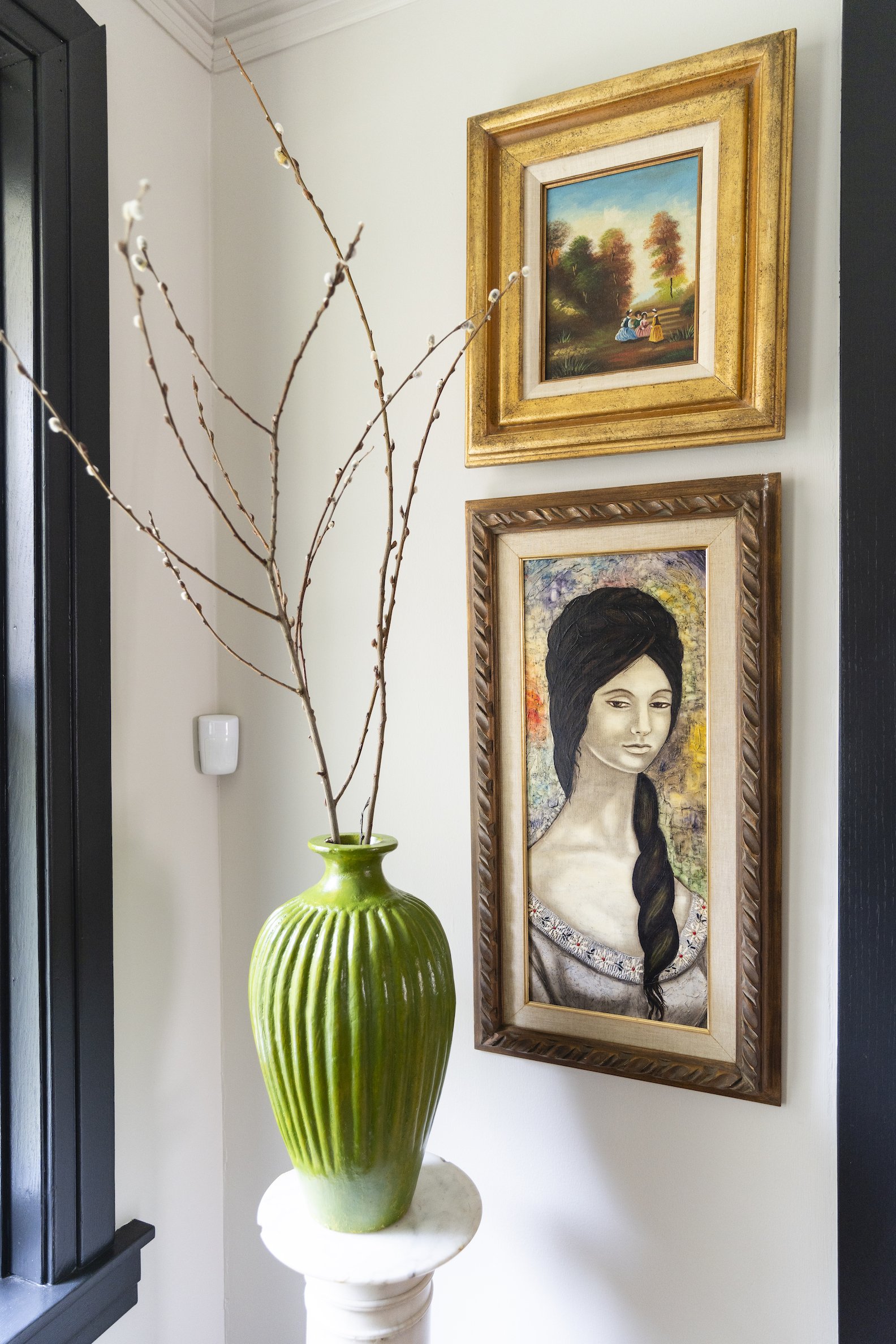5 TIPS TO BUY THRIFTED ART (TO MAKE YOUR SPACE AMAZING)
Art makes life worth living, right?
I always think that art makes your space worth living in, too. If you’re stuck with boring walls or worse, ugly walls, then it’s time to make your place special by buying art that has meaning to you. There’s a reason someone paid $450 million dollars for an obscure Da Vinci painting to put on their wall.
We might not be able to buy a Da Vinci worth the price of an island, but there are ways to identify special art for your walls.
Let’s dive into some common problems!
PROBLEM: HOW DO I EVEN START TO KNOW WHAT TO LOOK FOR!
Have you ever wandered into an estate sale, seen a painting you like, and just not known what is right to pay for it?
Don’t worry, it’s very normal. Thankfully, I can give you a starter skill—check for a signature. If you’ve read my free Everybody’s Guide to Scoring at an Estate Sale, then you know to always bring your phone to check item prices online.
Same for art!
When you find artwork you like, first check to see if there is a signature on it. If there is, you can probably find more information about them and compare prices for related works or prints. Check to see if they are a “listed artist” on Google, also. If they are, it’s likely the painting will cost more—or be an even better bargain for you.
PROBLEM: THERE’S NO SIGNATURE AND I STILL WANT TO KNOW THE VALUE!
Thankfully, checking for signatures isn’t the only surefire way to judge art’s value. If you’re at an estate sale or antique shop, one way to check for value is to examine the frame. Often a high quality frame (fine wood, bronze, etc.) is worth MORE than the actual painting itself.
And you know what?
Frames are art too—sometimes the real gem is discovering thrifted art is actually what’s around it. Hanging frames without the art can be a whole gallery wall thing.
But, I also love the feeling of finding the right frame for a great painting—and together, they make a great add to your space.
So the lesson is, don’t just stop and look for art, consider the frame as well!
PROBLEM: SOMETHING. . . . . SMELLS!
I know it might sound strange, but one of the most important parts of buying art for a client (or myself) is to smell it.
Yes.
Even though you might feel like an oddball getting up close and personal with a painting and sniffing it—ignore the raised eyebrows.
Why?
Actually a common problem with estate sale or antique paintings is the rotting of the material—most of these haven’t been hanging out in glass cases at the Louvre, but have traveled through different homes and circumstances. There might be mold. There might be rot. And I really don’t think you want to put those on your wall, even if the rot is a beautiful Monet sunset.
PROBLEM: THERE’S A STICKER ON THE BACK!
Though it might seem strange to have a sticker on the back of a painting you like, it can actually be a great indicator of value. I encourage checking art for stickers because it can clue you into the history of the work. Use that magic cell phone in your pocket again for research.
Find a studio name on there?
Likely, you stumbled onto one of the commercial art studios of the 20th Century that produced enormous quantities of art for homes. In the 1960s, Lee Reynolds and his Vanguard Studios produced more art than any other studio in the entire century—a lot of which now is valuable, vintage, and great.
If you see a sticker on the back of a painting, do a little extra research to see if you’ve got history in your hands.
PROBLEM: I ACTUALLY NOW FEEL LIKE I KNOW EVERYTHING ABOUT BUYING THRIFTED ART!
You’re close!
Lastly (and really importantly), I advise clients to know the material they are buying. Remember when you got up really close and smelled the art you’re looking at for mold? Well, if you’ve already done that, you won’t have a problem touching the artwork a little to see what it’s like.
Do a quick check of the material and medium—is the painting an actual oil or a print? Don’t sweat if it’s a print: limited editions of these can be valuable. For prints, check for the number usually on the lower left side for the edition number.
The lower the number of prints, the more likely you stumbled onto a valuable work.
Afterwards, also check the matting to make sure you’re not buying water/time/light damaged goods. If there are grayish streaks or any browning, it’s likely your artwork has had a real journey getting into your hands!
It hurts value if you’re looking for resale, but if you want a friend for your wall to transport you places. . .a little wear and tear can make you feel like a real partner for the journey.
I hope you have an amazing thrifted art adventure! Explore more Urban Lark here, and don’t forget to check out my vintage finds on the Etsy store where you can find the perfect vintage artwork, or take a look at my personalized design services!






